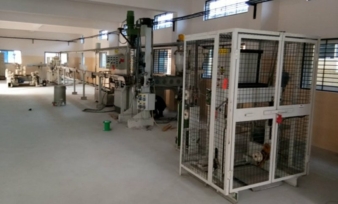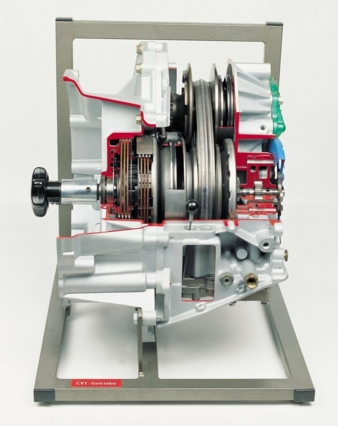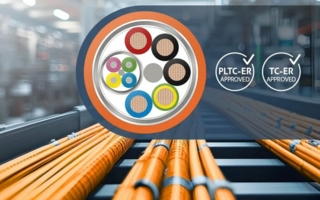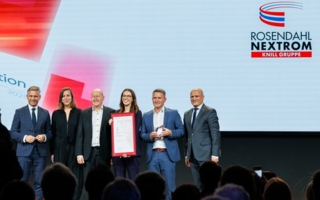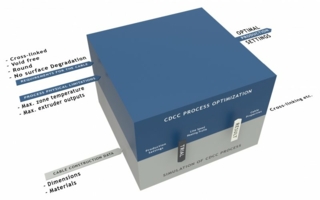30/10/2023 – Cable manufacture / drives
Optimizing system efficiency and ecological footprint
The past several decades have seen impressive refinements to gearboxes for industry and automobiles. Engineers have developed innovative approaches to problem-solving, such as transmission solutions optimized for specific tasks, greater integration of electronic submodules, new functionality, and the ability to network transmissions with other machine components.
These changes are reflected in the IP as well. During the past ten years, several patents have been published that describe ways to reduce the ecological footprint of machines and vehicles.
New and refined transmissions are now expected to be more reliable, stay in service longer, take up less space, optimise weight and efficiency, and generally reduce costs in pursuit of lower energy consumption and lower harmful emissions. Terms like CO2 reduction, decarbonisation, and carbon footprint are now widely discussed. The increasing integration of peripherals and submodules into transmissions has resulted in more compact, lighter, and more reliable units. This article discusses how the use of commercially available, modular drive systems can avoid oversized mechanical, electrical, and electronic drive assemblies and optimise a system’s CO2 footprint, while simultaneously opening up new opportunities for manufacturers and operators of these machines and even facilitating innovative IoT business models.
Complete drive with high variability: “Extrusion line for medical cables”
To keep up with the expectations of modern medicine, cables used in medical systems must exhibit a range of special characteristics. These requirements influence not just the design, where space is always at a premium, but also hygienic and safety qualities. Innovative production methods and cutting-edge materials play large roles in fulfilling these elevated expectations. But what about the ecological footprint of such complex and technically demanding systems?
Extrusion lines for medical cables consist of one unwinding and one winding machine (constant output drives). These machines are characterised by a great deal of variability as a result of dynamic winding diameters and torques since winding machines have the same torque characteristics as automobiles. The same is true for extruder drives (constant torque drive), whereby variability is due to inconsistent shear strengths and temperatures required to process the common plastics. The third highly variable drive is the positioning drive for layered winding of finished cable. In this case, the spool starts at its minimum, empty weight and finishes at its maximum, fully wound weight. It is also important to consider the moment of inertia ratio between the positioning machine and drive motor in order to ensure good regulation and control. This inevitably results in over sizing. The need for drives to produce high torque at start-up is another reason for over sizing.
Mechanically stepless transmissions
A mechanically stepless transmission consists primarily of two pairs of cone pulleys installed on parallel shafts (driving and driven shafts) that can be displaced relative to each other. They are connected to each other by a rigid yet elastic chain or V-belt. The faces of the chain or V-belt transfer torque by engaging positively or frictionally into the cone pulleys in the radial direction. Each of the pulleys is arranged on its shaft to allow diagonal displacement. A mechanically, electrically, or hydraulically adjustable rocker permits infinite adjustment of the distances between the pairs of cones, causing displacement of the flexible chain or V-belt. This changes the effective transmission diameter of the pulley pairs and, as a result, the transmission ratio. A common bicycle dérailleur exemplifies mechanical adjustment of the transmission ratio with all of its benefits and drawbacks.
Electronic stepless drive system
A stepless drive consists of a planetary transmission, whose sun gear is driven by an electric motor, and ring gear, driven by a second electric motor, with output over the planet gear’s bearing. The electronic part of the drive system is characterized by a torque balancing system to provide a tight/slack connection without excessive tolerance, slippage, and vibration. Electronic adjustment of the transmission ratio is seen on high-speed winding systems in the cable and wire industry, in slow motion and as a speed- and diameter-adjustable process. In those cases, the cable or wire is the rigid but flexible element. In this way, all of the disadvantages of mechanically stepless transmissions known from the literature and in automobile forums are eliminated. The results: There is no need to produce high lateral forces; wear to the chain, cone pulley pairs, and axes is eliminated, since these are not present; and there is no rubber band effect during acceleration or shifting.
Optimizing a system's ecological footprint
As awareness of sustainability issues continues to expand, particularly in regards to climate protection, it is no wonder that industrial and manufacturing companies regularly assess the optimization potential of their systems. But where, specifically, can they make real progress?
An electronically stepless drive system is a good place to start and well suited for dynamic applications where a wide range of drive speeds and torques is required. Examples include winding machines; extruders; presses with high, low, and precision gears; conveyors with high, low, and idle gears; applications where high breakout torque is needed; and of course automobiles. Energy savings of more than 40% over conventional drive systems can be achieved. The potential is massive, comparable with that of shifting transmissions of the Industry 2.0 and 3.0 eras. Summary of benefits:
– nergy costs minimized with optimization of drive performance on motor-driven applications (like a winder or extruder).
– Optimization of generator output on generator-driven machines like unwinders;
– standardization of drive components on individual machines or system; within a department; in a plant or company; or entire industries;
– standardization of new services, products, and business models driving innovations in IoT for “networking and digital transformation in drive technology";
– valuable contributions to energy efficiency and conservation of resources (material and weight savings) and the larger shift away from fossil fuels to clean energy;
– better than DIN EN 61800-9-2 with optimized gear ratios.
The author Juan Carlos González Villar is owner of the company Kabel.Consult.Ing.
Kabel.Consult.Ing
Reststrauch 55, 41199 Mönchengladbach, Germany
Contact person is Juan Carlos González Villar
Tel.: +49 2166 912620
gonzalez@kabelconsulting.de
www.kabelconsulting.de

